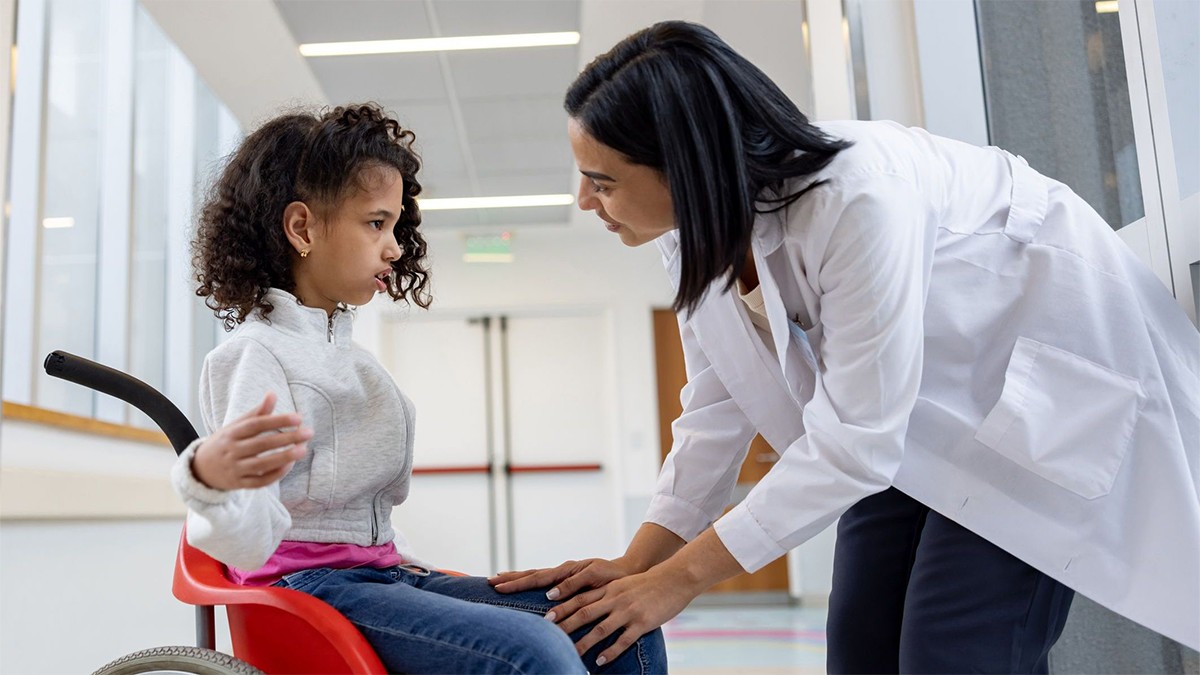Key points
- There is no cure for cerebral palsy (CP), but early identification and treatment can improve the lives of those who have the condition.
- There are steps you can take if you are concerned about your child's development.
- The Individuals with Disabilities Education Act (IDEA) can help children and families access early intervention services and services for school-aged children.

What to do if you are concerned

Talk to your child's healthcare provider
If you think your child is not meeting movement milestones or might have CP, contact your doctor or nurse and share your concerns.
If you or your doctor is still concerned, ask for a referral to a specialist who can do a more in-depth evaluation of your child and assist in making a diagnosis.
Contact your state or territory's early intervention program
In addition to talking to your child's healthcare provider, call your state or territory's early intervention program to request a free or reduced cost evaluation to find out if your child qualifies for intervention services. This is sometimes called a Child Find evaluation.
Early intervention services can start even before a CP diagnosis is made.
Where to call for a free or reduced cost evaluation from the state or territory depends on your child's age:
- If your child is not yet 3 years old, contact your local early intervention system. You can find the right contact information for your state by calling the Early Childhood Technical Assistance Center (ECTA) at 919-962-2001 or visit the Early Childhood Technical Assistance Center.
- If your child is 3 years of age or older, contact your local public school system. Even if your child is not yet old enough for kindergarten or enrolled in a public school, call your local elementary school or board of education and ask to speak with someone who can help you have your child evaluated. If you're not sure who to contact, you can call the Early Childhood Technical Assistance Center (ECTA) at 919-962-2001 or visit the Early Childhood Technical Assistance Center.
Individuals with Disabilities Education Act (IDEA) Services
Both early intervention and school-aged services are available through our nation’s special education law—the Individuals with Disabilities Education Act (IDEA).
- Part C applies to early intervention services (ages birth to 36 months).
- Part B applies to services for school-aged children (ages 3 to 22 years).
Even if your child has not been diagnosed with CP, he or she may be eligible for IDEA services.
Part C of IDEA: Early Intervention for Babies and Toddlers
Early intervention services can help children from birth through 36 months of age learn new skills, whether they have been identified recently with motor and movement delays or already have a CP diagnosis. Early intervention services can start even before a CP diagnosis is made.
Depending on the child's needs, early intervention services might include
- family training, counseling, and home visits;
- occupational, physical, or speech therapy;
- hearing loss services;
- health, nutrition, social work, and assistance with service coordination;
- assistive technology devices and services; and
- transportation.
Before Part C services start, an Individual Family Service Plan (IFSP) is developed by a team, which includes the parents and all providers who work with the child and the family. The IFSP describes the child's present level of development, the family's strengths and needs, the specific services to be provided to the child and the family, and a plan to transition to public school.
To learn more about early intervention services for babies and toddlers, visit the Center for Parent Information and Resources website.
Part B of IDEA: Services for School-Aged Children
Services for school-aged children with developmental disabilities (3 to 22 years of age) are provided free of charge through the public school system.
Among the services covered under IDEA are
- special education;
- related services such as physical, occupational, and speech therapy; and
- supplementary aids and services, such as adaptive equipment or special communication systems.
Before Part B services start, an Individualized Education Plan (IEP) is developed for children 3 to 22 years of age who qualify for special education services from school districts. An IEP is similar to an IFSP, but more focused on the child's goals rather than on the family's goals.
To learn more about Part B services for school-aged children, visit the Center for Parent Information and Resources website.
